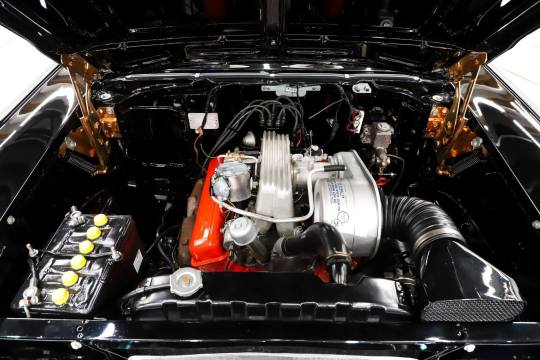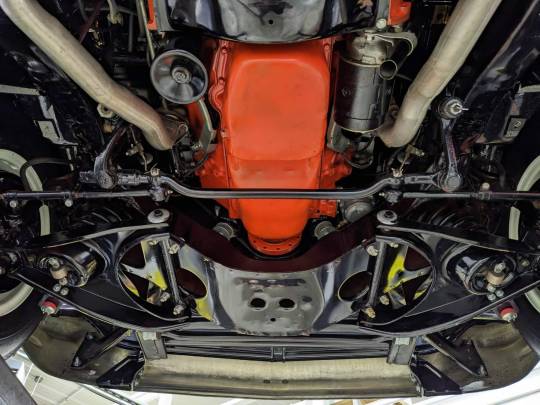#Vehicle Tracking System In India
Explore tagged Tumblr posts
Text
Vehicle Tracking Systems in India
Watsoo Vehicle Tracking Systems assume a significant part in checking truck mishaps. Its highlights like real-time monitoring, data analysis contributes to overall fleet management. Continuous GPS Following, Speed Checking and Cautions, Route Optimization, Driver Behavior Analysis, Maintenance Alerts, Fatigue Monitoring, Emergency Response Assistance.
#vehicle tracking system#vltd#vts#vehicle tracking system in india#vehicle tracking system gurgaon#vehicle tracking system india
0 notes
Text
#lorry loads#freight transportation#trucking logistics#cargo hauling#haulage services#commercial vehicle operations#heavy load delivery#bulk goods shipment#oversize load transport#distribution trucking#logistics india#supply chain management india#freight forwarding india#transportation services india#warehousing india#distribution networks india#import export solutions india#third-party logistics india#cold chain logistics india#online lorry loads services#freight marketplace#truck load boards#digital logistics platform#transport automation#load matching#carrier connectivity#real-time tracking#capacity utilization#transportation management systems#house shifting services online india
0 notes
Text
#lorry loads#freight transportation#trucking logistics#cargo hauling#haulage services#commercial vehicle operations#heavy load delivery#bulk goods shipment#oversize load transport#distribution trucking#logistics india#supply chain management india#freight forwarding india#transportation services india#warehousing india#distribution networks india#import export solutions india#third-party logistics india#cold chain logistics india#online lorry loads services#freight marketplace#truck load boards#digital logistics platform#transport automation#load matching#carrier connectivity#real-time tracking#capacity utilization#transportation management systems#house shifting services online india
0 notes
Text
Enhancing Safety in the Mining Industry: The Role of Advanced Telematics Solutions

The mining industry faces significant challenges in ensuring the safety of its workforce amidst hazardous working conditions and complex operational environments. Despite stringent safety regulations and protocols, accidents and incidents continue to pose risks to personnel and assets. In this context, the adoption of advanced telematics solutions emerges as a critical strategy to enhance safety standards and mitigate risks within mining operations.
In this article, we will discuss the role of telematics technology, its key features, applications, and benefits in the mining industry.
Understanding the Role of Telematics Technology in the Mining Industry
Telematics systems employ a combination of hardware and software components to collect, transmit, and analyse data from vehicles and assets in real-time. The GPS tracking devices installed in vehicles capture location coordinates, speed, and route information, which is transmitted to a centralised platform via cellular or satellite networks. In addition, onboard sensors and diagnostics systems monitor vehicle performance metrics such as engine health, fuel consumption, and maintenance status.
This data is then processed and analysed using advanced algorithms and fleet telematic analytics tools to generate actionable insights and performance reports for fleet managers and stakeholders. By providing visibility into key operational parameters and safety metrics, mining telematics systems enable mining companies to proactively identify risks, implement preventive measures, and optimise resource allocation to enhance safety and efficiency across their operations.
Key Features of Telematics Fleet Management System for Mining Operations
Live Location Tracking: Track the real-time location of vehicles and equipment, enabling better fleet management and resource allocation.
Rash Driving Alerts: Receive alerts for instances of aggressive or unsafe driving behaviour, allowing for immediate intervention and corrective action.
Accident Detection: Detect accidents or collisions as they occur, enabling rapid response and assistance to affected personnel.
Autonomous Emergency Braking (AEB): Automatically apply brakes in emergency situations to prevent or mitigate collisions, enhancing overall safety on the road.
Tailgating Detection: Identify instances of tailgating, a common cause of accidents, and alert drivers to maintain safe following distances.
Overspeeding Monitoring: Monitor vehicle speed in real-time and receive alerts for instances of speeding, helping to prevent accidents and ensure compliance with safety regulations.
Drowsiness Detection: Detects signs of driver drowsiness or fatigue and provides timely alerts to prevent accidents caused by impaired alertness.
Distraction Monitoring: Monitor driver attentiveness and detect distractions such as mobile phone usage or inattentiveness, reducing the risk of accidents due to driver distraction.
Application of Telematics in the Mining Industry
Enhanced Driving Behavior Insights
Gain comprehensive insights into driving behaviour, empowering mining companies to identify and address unsafe practices effectively. By analysing factors such as speed, acceleration, and braking, organisations can develop targeted strategies to promote safer driving habits among their workforce.
Access to Incident Videos
Access to incident videos in real-time facilitates prompt response and investigation of accidents or incidents within mining operations. This capability enhances safety protocols by enabling timely review and analysis, ultimately contributing to the development of more robust risk management strategies.
Fleet Performance Optimization
Utilise data analytics to optimise fleet performance and efficiency in mining operations. By leveraging insights derived from telemetric fleet management systems, organisations can identify areas of inefficiency and implement corrective measures to reduce operational costs and enhance productivity across their fleet.
Benefits of Using Telematics in Mining Operations
Telematics technology finds various benefits in mining operations, contributing to enhanced safety, efficiency, and productivity. Some key benefits include:
Fleet Management: Telematics systems enable real-time vehicle tracking and equipment, allowing managers to monitor their location, speed, and status. This ensures efficient fleet management, optimal asset utilisation, and timely maintenance scheduling.
Remote Monitoring: Telematics enables remote monitoring of equipment performance and health, including engine diagnostics, fuel consumption, and maintenance alerts. This proactive approach helps prevent unexpected breakdowns, reduces downtime, and extends equipment lifespan.
Safety Enhancement: Integration with fatigue monitoring systems helps identify signs of driver fatigue, allowing for timely intervention to prevent accidents caused by drowsiness.
Data-Driven Decision-Making: Historical performance data and trend analysis provide valuable insights for long-term planning and strategic decision-making, driving continuous improvement initiatives.
Scalability: Telematics solutions are scalable and customizable to meet the evolving needs of mining operations, accommodating changes in fleet size, geographic expansion, and technological advancements.
Conclusion
To sum up, investing in mining telematics solutions is important for safeguarding worker wellbeing and enhancing operational efficiency in the mining industry. By leveraging telematics technology, mining companies can proactively identify and mitigate safety risks, optimise fleet performance, and ensure regulatory compliance.
#telematics in mining#telematics#mining telematics#applications of telematics#advantages of telematics#telematics solution providers in india#telematics vehicle tracking#truck fleet telematic#mining vehicle telematics#commercial fleet telematics#telematics software providers#telematics solutions#telematics data#telematics system#fleet telematics analytics#vehicle telematics data#mining telematics solution
0 notes
Text
Navigating Efficiency: GPS Fleet Tracking Software in the UAE
In the dynamic landscape of fleet management, businesses in the UAE are increasingly turning to GPS fleet tracking software as a powerful tool for enhancing operational efficiency, improving safety, and optimizing resource utilization. This technology provides real-time insights into the location and performance of vehicles, enabling businesses to streamline operations, reduce costs, and deliver superior service to their customers. In this blog, we’ll explore the features and benefits of GPS fleet tracking software in the UAE and how it’s revolutionizing the way businesses manage their fleets.
Real-Time Vehicle Tracking: At the core of GPS fleet tracking software lies the ability to monitor the real-time location of vehicles. By leveraging GPS technology, businesses can track the precise whereabouts of their vehicles at any given moment, allowing for better route planning, improved dispatching, and enhanced fleet visibility. Whether it’s monitoring delivery trucks, service vehicles, or rental cars, real-time tracking ensures that businesses can stay informed and responsive to the needs of their customers.
Optimized Route Planning: With GPS fleet tracking software, businesses can optimize their routes to minimize fuel consumption, reduce travel time, and maximize efficiency. By analyzing historical data and real-time traffic information, the software can suggest the most efficient routes for drivers, taking into account factors such as traffic congestion, road closures, and weather conditions. This not only saves time and money but also improves driver productivity and customer satisfaction.
Enhanced Driver Safety: Safety is paramount in fleet management, and GPS tracking software helps businesses promote safer driving practices among their drivers. By monitoring factors such as speed, harsh braking, and sudden acceleration, businesses can identify risky behaviors and provide targeted coaching and training to improve driver safety. Additionally, in the event of an emergency or accident, GPS tracking allows businesses to quickly locate and assist their drivers, ensuring their well-being and minimizing downtime.
Improved Asset Management: GPS fleet tracking software provides businesses with valuable insights into the performance and utilization of their vehicles and assets. By tracking metrics such as mileage, fuel consumption, and engine diagnostics, businesses can identify opportunities for maintenance optimization, asset utilization improvement, and cost reduction. This proactive approach to asset management helps businesses extend the lifespan of their vehicles, minimize downtime, and maximize return on investment.
Compliance and Regulatory Reporting: In a highly regulated industry such as transportation, compliance with government regulations and industry standards is essential. GPS fleet tracking software automates compliance reporting by capturing and storing data related to driver hours, vehicle inspections, and regulatory requirements. This streamlines the reporting process, reduces administrative burden, and ensures that businesses remain compliant with relevant regulations, avoiding costly fines and penalties.
Conclusion: GPS fleet tracking software is revolutionizing fleet management in the UAE, providing businesses with powerful tools to enhance efficiency, improve safety, and optimize resource utilization. By leveraging real-time vehicle tracking, optimized route planning, enhanced driver safety, improved asset management, and streamlined compliance reporting, businesses can gain a competitive edge in their industry while delivering superior service to their customers. As technology continues to evolve, GPS fleet tracking software will play an increasingly vital role in helping businesses navigate the complexities of fleet management and drive success in the UAE and beyond.
#business#GPS fleet Tracking Software uae#Gps vehicle tracking system company in dubai#india#news#School bus tracking software dubai#sustainability#technology
0 notes
Text

1957 Chevy
The Legendary “Black Widow” 1957 Chevy: A Piece of Racing History
When it comes to legendary cars, the 1957 Chevrolet, also known as the “Black Widow,” holds a special place in the hearts of car enthusiasts. However, few people know the intriguing story behind this iconic vehicle. In this article, we will take you on a journey through time and explore the fascinating history of the Black Widow.

The Secret Support Behind the Scenes
In the 1950s, car manufacturers were prohibited from directly promoting racing. Nevertheless, behind closed doors, Chevrolet found a way to support the racing community. They collaborated with a company called SEDCO to build a limited number of race-ready 1957 Chevys. Only 18 of these incredible vehicles were ever produced.

Unleashing the Beast
To create the ultimate racing machine, Chevrolet started with the lightest model available, the no-frills 150 utility sedan. They then equipped these cars with high-performance drivelines that would leave their competitors in awe. The Black Widows proved to be astonishingly fast, setting records and securing multiple victories on the track.

Restoring the Legend
One particular Black Widow has undergone an extensive body-off-frame restoration, meticulously recreating its original glory. The attention to detail is impeccable, resulting in a pristine body that is arguably even better than when it first rolled off the factory floor.
Exquisite Exterior
Painted in the iconic Black Widow colors of Onyx Black and India Ivory, the exterior of this restored beauty is nothing short of breathtaking. Every panel is laser straight, and the gaps are precise. There isn’t a hint of rust or damage to be found. The flawless paint job has been polished to a mirror-like finish, allowing you to see your own reflection. It’s like holding history in your hands.

Interior Simplicity
Inside the Black Widow, you’ll find a minimalist design that emphasizes performance over luxury. There are no frills, not even a back seat! The rear windows are stationary, and amenities such as armrests, visors, and even a dome light are absent. However, this simplicity only adds to the car’s authenticity and racing pedigree.

Attention to Detail
No aspect of the Black Widow’s restoration has been overlooked, including the trunk compartment. Painted in glossy white, it exudes cleanliness and attention to detail. A reproduction mat, seat divider, and weatherstrip have been added to complete the authentic look. Even the spare tire matches the original style with its 6 lug pattern and reproduction Firestone tire.

The Heart of a Champion
Under the hood lies a highly detailed engine compartment that exemplifies show-quality craftsmanship. The 283 cubic-inch V8 engine has been built to its original 283 horsepower specifications, complete with a correct factory fuel injection setup. Not only does it look stunning, but it also performs flawlessly. With a responsive throttle and a distinctive idle, this powerhouse truly embodies the spirit of a race car.

A Masterpiece Underneath
The detailed restoration extends to the underside of the car as well. The chassis has been meticulously prepped and painted in a smooth gloss black finish. Every component has been rebuilt, replaced, restored, and detailed to match the original specifications. The Black Widow features front and rear sway bars, as well as the unique duplication of two shocks at each rear wheel for enhanced performance.

A True Muscle Car
With its completely rebuilt brake system, all-new fuel system, and Flowmaster dual exhaust, this Black Widow not only looks and sounds like a classic muscle car but also performs like one. The spotless Chevy Orange engine block, lower plug wire shielding, canister-type oil filter, restored starter, and dated 1957 transmission all contribute to creating an authentic driving experience. The floors, braces, and rockers have been meticulously restored to their original factory red oxide primer finish.
101 notes
·
View notes
Text
A Complete Guide to Electric Car Charger Installation
As more people adopt electric vehicles (EVs), the demand for reliable and accessible charging solutions increases. Installing an EV charger at home provides a convenient way to keep your vehicle fully charged and ready to go. This guide walks you through selecting and installing a portable or wall-mounted EV charger, focusing on the specific requirements in Dubai.

Understanding EV Charging Levels
EV chargers are categorized into three levels:
• Level 1: You connect this charger to a standard 120V household outlet, and it typically adds 3–5 kilometers (2–3 miles) of range per hour. While it’s ideal for overnight charging, it charges slower than the other levels. • Level 2 (DC Fast Charging): This charger provides rapid charging but requires specialized equipment.
Step 1: Assess Your Home’s Electrical System
Before installing an EV charger, assess whether your home's electrical system can handle the increased demand. • Panel Capacity: Confirm that your electrical panel can handle the additional load. If you install a Level 2 charger, you may need to upgrade to a 60–100 amp electrical panel.
• Circuit Availability: Verify if space is available for an additional circuit breaker dedicated to the EV charger. • Wiring and Outlets: Check if the existing wiring can support the charger or if upgrades are necessary.
Step 2: Choose the Right EV Charger
Selecting the appropriate charger is crucial:
Compatibility: Make sure the charger is suitable for your specific EV model and connector type. The majority of EVs use the SAE J1772 connector, although some models may require additional adapters.
Charging Speed: Consider the charger's power output. Higher amperage chargers (e.g., 32A) charge faster but may require panel upgrades.
Smart Features: Some chargers offer Wi-Fi connectivity, allowing you to schedule charging times, monitor energy usage, and integrate with smart home systems.
Portability: Portable chargers are versatile and can be used at different locations, but they may charge slower than wall-mounted units.
Step 3: Obtain Necessary Permits
In India, the installation of an EV charger may require approval from local authorities:
Electrical Inspectorate: A safety inspection might be required to confirm that the installation meets all relevant standards.
Documentation: Prepare documents such as your EV's registration, proof of residence, and electrical panel specifications.
Step 4: Hire a Licensed Electrician
Hire a certified electrician with experience in installing EV chargers:
Assessment: The electrician will evaluate your home's electrical system and determine the necessary upgrades.
Installation: They will install the charger, ensuring all wiring is safely connected and complies with local codes.
Inspection: Once the installation is complete, the electrician will test the system to verify it’s working correctly.
Step 5: Install the EV Charger
The installation process involves:
Location Selection: Choose a location near your parking area, ensuring the charger is within reach of your vehicle's charging port.
Mounting: For wall-mounted chargers, ensure the wall is sturdy and can support the charger's weight.
Weather Protection: If installing outdoors, use weatherproof enclosures to protect the charger from environmental elements.
Connection: Connect the charger to the dedicated circuit, ensuring all connections are secure and insulated.
Step 6: Test the System
After installation:
Power On: Switch on the power supply to the newly installed circuit.
Functionality Check: Test the charger by plugging in your EV and monitoring the charging process.
Safety Verification: Ensure there are no overheating issues, tripped breakers, or error messages.
Step 7: Utilize Smart Features
If your charger has smart capabilities:
Scheduling: Schedule charging during off-peak hours to benefit from reduced electricity rates.
Monitoring: Use the charger's app or interface to track energy consumption and charging history.
Integration: Connect the charger to your home automation system for more convenient and centralized control.
Conclusion
Installing an EV charger at home in Dubai is a feasible and beneficial investment for EV owners. By carefully assessing your home's electrical system, selecting the appropriate charger, obtaining necessary approvals, and hiring a licensed electrician, you can ensure a safe and efficient charging setup. Embracing this technology not only supports your EV usage but also contributes to a sustainable future.
"I’ve been using Starkdriveinnovations' chargers for months, and they never disappoint. Quick charging times, easy installation, and they’re environmentally friendly. A fantastic investment for anyone transitioning to electric vehicles."
#Installing an EV charger#portable ev charger#electric car charger#ev charging stations#electric charging stations#jeep accessories uae#electric vehicle charging station
2 notes
·
View notes
Text
What is Mutual Fund?
A mutual fund is a type of investment vehicle that pools money from multiple investors to invest in a diversified portfolio of securities such as stocks, bonds, and other assets. Investments in securities are spread across a wide cross-section of industries and sectors and thus the risk is reduced.
It is managed by a professional fund manager or an asset management company (AMC) who makes investment decisions on behalf of the investors.
Mutual funds offer good investment opportunities to the investors. Like all investments, they also carry certain risks
SEBI formulates policies and regulates the mutual funds to protect the interest of the investors.
OVERVIEW OF MUTUAL FUNDS INDUSTRY IN INDIA
The mutual fund industry in India was set up through a combination of regulatory changes, legislative reforms and the entry of various market players.
Unit Trust of India- UTI was founded in 1964, which is when the mutual fund sector in India first started to take off. To mobilize public funds and invest them in the capital markets, UTI was established as a statutory body under the UTI Act, 1963. The idea of mutual funds was greatly popularized in India because to UTI.
Regulatory Framework-In India, the mutual fund industry's regulatory structure began to take shape in the 1990s. The Securities and Exchange Board of India (SEBI) Act, which established SEBI as the governing body for the Indian securities markets, was passed in 1993. Among other market intermediaries, SEBI was responsible with regulating and supervising mutual funds.
The SEBI (Mutual Funds) Regulations,1996- This regulation established the legal foundation for the establishment, administration, and operation of mutual funds in India. These regulations outlined the standards for investor protection, investment restrictions, disclosure requirements, and eligibility requirements for asset management companies (AMCs).
Introduction of Private Sector Mutual Funds: UTI was the only active mutual fund provider in India prior to 1993. Private sector mutual funds were nevertheless permitted to enter the market as a result of the liberalization of the financial sector and the opening up of the Indian economy. Many domestic and foreign financial organizations launched their own AMCs and entered the mutual fund industry.
Product Line Evolution: The mutual fund sector in India has grown and increased its product selection throughout the years. Mutual funds initially mainly offered income and growth opportunities. To address various investor needs and risk profiles, the industry did, however, offer a wider range of products, such as equity funds, debt funds, balanced funds, and specialist sector funds.
Investor Education and Awareness: Serious efforts have been made to educate and raise investor awareness in order to encourage investor involvement in mutual funds. Industry groups, AMCs, and SEBI have run investor awareness campaigns, distributed instructional materials, and supported systems for resolving investor complaints. Systematic Investment Plans (SIPs) were introduced, and this was a significant factor in luring individual investors
Technological Advancements-The mutual fund sector in India has embraced technological development, making it possible for investors to access and invest in mutual funds through online platforms and mobile applications. Investors can now transact, track their investments, and get mutual fund information more easily thanks to digital platforms.
The mutual fund industry in India has developed into a strong and regulated sector through regulatory changes, market competition, and investor-centric initiatives. The sector keeps expanding, drawing in more investors and providing them with a wide variety of investment possibilities around the nation.
#business#writing#investment#mutual funds#security market#money#sebi registered investment advisor#equity#make money tips#savings#financial#raise funds#funds#profit#return#growth#reading#knowledge#personal finance#income
42 notes
·
View notes
Text

Need a reliable, affordable, and convenient ride? Look no further! RideBoom is now available in India, bringing you a seamless transportation experience like never before.
📱 With our user-friendly mobile app, you can easily book a ride with just a few taps on your smartphone. Whether you're heading to work, exploring the city, or meeting friends, RideBoom has got you covered!
✅ Here's why you'll love RideBoom: 1️⃣ Safe and Trusted Drivers: Our drivers undergo thorough background checks and are fully licensed, ensuring your safety and peace of mind. 2️⃣ Affordable Fares: Say goodbye to overpriced rides! RideBoom offers competitive rates that won't break the bank. 3️⃣ Ride Options: Choose from a range of vehicles to suit your needs, from economical options to luxury cars. 4️⃣ Real-Time Tracking: Track your ride in real-time, so you know exactly when your driver will arrive. 5️⃣ Cashless Payments: Enjoy the convenience of cashless transactions through our secure and easy-to-use payment system.
🌟 Download the RideBoom app now and get ready for a smooth and enjoyable journey across India. Experience the future of transportation at your fingertips!
📲 Download the app here: [Insert App Store/Play Store links]
🔁 Help us spread the word! Share this post with your friends and family who could benefit from RideBoom's services. Let's make transportation hassle-free for everyone in India! 🙌
RideBoomIndia #TransportationRevolution #ConvenientRides #DownloadTheApp
18 notes
·
View notes
Text

You may like it : Best Electric Scooters in India
For the iQube equipped with a 2.2kWh battery, a cashback of Rs 17,300 is available, with certain bank cards offering an additional Rs 7,700 cashback. The 3.4kWh variant features a cashback of Rs 20,000, along with a Rs 10,000 discount for select cardholders. Additionally, TVS provides a complimentary extended warranty for the iQube S variant.
These incentives are expected to draw more consumers towards electric scooters as the trend of e-mobility continues to grow in India. The iQube presents an excellent option for those contemplating electric two-wheelers, as it combines affordability with environmental advantages.
you may like it : Best Scooter in India
In terms of performance, the TVS iQube demonstrates reliability. Testing indicates that it delivers sufficient power and range for everyday commuting. The 2.2kWh model offers a range of 75 km and a maximum speed of 75 km/h, while the 3.4kWh version provides a range of 100 km and a top speed of 80 km/h. Charging the smaller battery to 80% requires two hours, whereas the larger battery takes a bit longer.
The iQube is also equipped with contemporary technology, including a digital display that provides information on speed, battery status, and navigation. Riders can connect their smartphones to track their rides and utilize features from the TVS app.
Comfort and convenience are prioritized, featuring a roomy seat and under-seat storage. The suspension system ensures a smooth ride, while safety is enhanced by front and rear disc brakes, regenerative braking, and LED lights for improved visibility at night.
TVS is actively expanding its charging infrastructure to facilitate convenience for electric vehicle users, with plans for additional stations across urban areas. Home charging solutions are also being considered, enabling users to charge their scooters overnight.
You may like it : Royal Enfield Makes an Announcement
With the festive season in full swing, it is an opportune moment to purchase the TVS iQube. With its combination of cashback incentives, advanced features, and reliable performance, the iQube stands out as an ideal choice for environmentally conscious commuters seeking economical and sustainable transportation options.
2 notes
·
View notes
Text
Space Tech: Private Ventures and Mars Exploration

Space Tech
Beyond intrepid exploration, space technology has advanced to address pressing issues on Earth. It is becoming more and more essential to the effective operation of contemporary societies and their economic growth. Space has the potential to directly affect billions of people’s lives and open up large-scale, highly impactful solutions.
A broad term for satellites, space stations, ground stations, tracking and monitoring centers, downstream analytics and artificial intelligence, software, and other technologies, SpaceTech offers innovative ways to solve global concerns. Satellites increase communication, navigation, and earth observation capacity at low cost even in remote locations. Satellite-based earth observation data is vital, accurate, and reliable for data-driven decision-making by businesses and governments.
The underserved and otherwise unprofitable regions can benefit from high-speed connectivity thanks to the satellites. The application of action plans for intelligent agriculture, resource management (land and water), infrastructure development (urban and rural), climate and weather monitoring, environmental protection (including reducing the risk of disaster), and other purposes can all benefit from the use of satellite data.
Aerospace Innovation
The space industry is predicted to increase in value from USD 360 billion in 2018 to USD 558 billion by 2026 and roughly USD 1 trillion by 2040. Even though the Indian Space Research Organization (ISRO) is one of the world’s top space agencies and is working on projects like the Indian Regional Navigation Satellite System (NavIC) and the Mars Orbiter Mission (MOM), India currently only makes up 2%, or USD 7 Bn, of this market value.
One reason could be that the private sector’s contribution to the Indian space industry has primarily consisted of ISRO subcontracting, with ISRO historically handling the crucial value addition activities internally. Because of this, Indian private companies have lagged behind other world leaders in SpaceTech in terms of end-to-end capabilities.
The publication of SpaceCom Policy 2020, Space RS Policy 2020, Geospatial Policy 2021, and other policies, along with the creation of organizations like NewSpace India Ltd (NSIL) and the Indian National Space Promotion and Authorization Centre (IN–SPACe), have created a national push to expedite the private sector’s involvement in the Indian space area. The Department of Space is also working on a comprehensive Space Act and other policies, including launch vehicle and space exploration policies.
Because of our natural curiosity and desire to understand the universe, space travel has long fascinated people.
Recently, private enterprise and international cooperation have transformed space exploration.
This article will explore the changing face of space exploration and emphasize the importance of international collaboration and private industry.
New Space Technologies
Pioneers of Personal Space Travel
NASA, Roscosmos, and ESA were the only government space agencies allowed to explore space. However, private companies leading space innovation changed everything:
SpaceX since 2002 has resupplied the ISS, developed reusable rocket technology, and prepared to colonize Mars.
Jeff Bezos’ Blue Origin offers professional and recreational suborbital and orbital spaceflight.
Rick Branson’s suborbital space tourism company, Virgin Galactic.
Innovating, competing, and seeking commercial opportunities beyond Earth are redefining space exploration in private space ventures.
Space Exploration Companies
International Space Cooperation
Space exploration requires international cooperation even as private businesses grow:
The Earth-orbiting International Space Station (ISS) is a global collaboration marvel. European, Japanese, Canadian, Russian, and US space agencies participate.
Mars exploration: NASA, ESA, and others work on Curiosity and Mars Sample Return.
The Artemis Accords outlines global cooperation on the Moon and beyond, inviting international partners to lunar exploration.
Global Collaboration and Private Enterprises Benefits
Space exploration benefits from private sector involvement and international cooperation in a number of ways.
Innovation: By bringing in competition and innovation, private endeavors lower costs and advance technology.
Commercialization: Businesses worldwide can take advantage of commercial endeavors to expand their satellite deployment, space tourism, and resource exploitation capabilities.
Shared Resources: Working together, nations can pool resources, exchange knowledge, and take on challenging projects.
Scientific Discovery: Across national boundaries, international cooperation increases the possibility of scientific discovery and exploration.
Difficulties and Things to Think About
Although private and international partnerships present notable benefits, they also present certain challenges.
Regulation: To address new challenges, the framework governing international cooperation and private space endeavors needs to change.
Resource Management: A complex ethical and legal challenge is the responsible use of space resources, such as lunar mining.
Space Debris: Coordinated actions ought to tackle the expanding problem of space debris and environmentally friendly space operations.
Space Travel Prospects
Future space exploration could lead to asteroid mining, planet colonization, and scientific breakthroughs.
Space exploration is entering a new era as private companies and multinational partnerships change the space environment.
Space exploration is more accessible, sustainable, and transformative than ever thanks to private innovation and international collaboration. It shows our willingness to push the limits and our enduring spirit of exploration.
Mars Rover
What is Mars Rover?
A robotic vehicle that investigates the surface of Mars is called a rover. Rovers are long-range, remotely controlled vehicles that gather data and take images while traveling great distances. They have found evidence of water, ancient life, and possible resources on Mars, among many other significant discoveries.
Six Mars rovers have been successful so far:
In 1997, Sojourner became the first rover to set foot on Mars. During 83 days, it investigated the Ares Vallis region. The twin rovers Spirit (2004) and Opportunity (2004) touched down on Mars in 2004. For many years, they investigated the Gusev Crater and Meridiani Planum, respectively. Opportunity stopped operating in 2018 and Spirit became stuck in 2010.
Gale Crater is presently being explored by Curiosity (2012). It has found evidence of ancient lakes and rivers, among many other significant discoveries.
The Jezero Crater region is being explored in Perseverance (2021). In addition to gathering samples of rock and regolith broken rock and soil for potential return to Earth, it is searching for indications of prehistoric life.
The first Chinese rover to set foot on Mars is Zhurong (2021). It is investigating the area of Utopia Planitia.
An essential component of our Mars exploration are the Mars rovers. They have made significant contributions to our understanding of the Red Planet’s potential for habitability.
Read more on Govindhtech.com
#Space Tech#MarsExploration#Ventures#SpaceTech#satellites#AI#Aerospace#NASA#technews#technology#govindhtech
2 notes
·
View notes
Text
Vehicle Tracking Systems in Delhi
Keeping a tasks business incorporates specific troubles, especially concerning fleet management. Tracking fleet location, vehicle theft and optimising routes, are a part of the huge issues. Fortunately, a Vehicle Tracking System is a response that will help you with beating these hardships. It is an incredible gadget for compelling fleet the chiefs. The system monitors your vehicle's region as well as grants you to smooth out the courses using GPS advancement.
#vehicle tracking systems in india#vehicle tracking systems in gurugram#vehicle tracking systems in delhi
0 notes
Text
#lorry loads#freight transportation#trucking logistics#cargo hauling#haulage services#commercial vehicle operation#heavy load delivery#bulk goods shipment#oversize load transport#distribution trucking#logistics india#supply chain management india#freight forwarding india#transportation services india#warehousing india#distribution networks india#import export solutions india#thirdparty logistics india#cold chain logistics india#online lorry loads services#freight marketplace#truck load boards#digital logistics platform#transport automation#load matching#carrier connectivity#real-time tracking#capacity utilization#transportation management systems
0 notes
Text
#lorry loads#freight transportation#trucking logistics#cargo hauling#haulage services#commercial vehicle operations#heavy load delivery#bulk goods shipment#oversize load transport#distribution trucking#logistics india#supply chain management india#freight forwarding india#transportation services india#warehousing india#distribution networks india#import export solutions india#third-party logistics india#cold chain logistics india#online lorry loads services#freight marketplace#truck load boards#digital logistics platform#transport automation#load matching#carrier connectivity#real-time tracking#capacity utilization#transportation management systems#house shifting services online india
0 notes
Text
An indictment from the US Department of Justice may have solved the mystery of how disgraced cryptocurrency exchange FTX lost over $400 million in crypto. The indictment, filed last week, alleges that three individuals used a SIM-swapping attack to steal hundreds of millions in virtual currency from an unnamed company. The timing and the amount stolen coincides with FTX's theft. Meanwhile, in a letter obtained by WIRED this week, seven lawmakers have demanded the DOJ stop funding biased and inaccurate predictive policing tools until the agency has a way to ensure law enforcement won’t use them in a way that has a “discriminatory impact.”
In Florida, prosecutors say a 17-year-old named Alan Winston Filion is responsible for hundreds of swatting attacks around the United States. The news of his arrest was first reported by WIRED days before law enforcement made it public. It was the culmination of a multi-agency manhunt to piece together a trail of digital breadcrumbs left by the teenager. In Ukraine, unmanned aerial vehicles have been powerful tools since the Russian invasion began in February 2022. But as the war rages on, another kind of unmanned robot has increasingly appeared on the front-lines: the unmanned ground vehicle, or UGV.
For months lawyers affiliated with an India based hacker-for-hire firm called Appin Technology have used legal threats to censor reporting about the company’s alleged cyber mercenary past. The EFF, Techdirt, MuckRock, and DDoSecrets are now pushing back, publicly sharing details for the first time about the firm's efforts to remove content from the web. It’s a dangerous world out there, so we’ve also got a list of some major patches issued in January that you can use to update your devices to keep them secure.
And there’s more. Each week, we highlight the news we didn’t cover in-depth ourselves. Click on the headlines below to read the full stories. And stay safe out there.
China’s Hackers Keep Targeting US Water and Electricity Supplies
For years Western security officials have warned about the threat of China collecting data about millions of people and the country’s hackers infiltrating sensitive systems. This week, Federal Bureau of Investigation director Christopher Wray said hackers affiliated with the Chinese Communist Party are constantly targeting US critical infrastructure, such as water treatment plants, the electrical grid, and oil and gas pipelines. Wray’s testimony, at a House subcommittee on China, came as the FBI also revealed it removed malware from hundreds of routers in people’s homes and offices that had been planted by the Chinese hacking group Volt Typhoon.
“China’s hackers are positioning on American infrastructure in preparation to wreak havoc and cause real-world harm to American citizens and communities,” Wray said in the public appearance. “Low blows against civilians are part of China’s plan.” The FBI director added that China has a bigger hacking operation than “every other major nation combined,” and claimed that if all of the FBI’s cyber-focused agents were assigned to work on issues related to China, they would still be outnumbered “by at least 50 to 1.”
While concerns about the scale of China’s espionage and cyber operations aren’t new, the US intelligence community has been increasingly vocal and worried about critical infrastructure being targeted by Volt Typhoon and other groups. “The threat is extremely sophisticated and pervasive,” NSA officials warned in November. In May 2023, Microsoft revealed it had been tracking Volt Typhoon intrusions at communications and transportation infrastructure, among other critical infrastructure, in US states and Guam.
The FBI and DOJ, also revealed this week that they remotely removed the KV Botnet malware from hundreds of routers infected by Volt Typhoon. The impacted routers, from Cisco and Netgear, were mostly at the end of their life, but were being used as part of wider operations. “The Volt Typhoon malware enabled China to hide, among other things, pre-operational reconnaissance and network exploitation against critical infrastructure like our communications, energy, transportation, and water sectors,” Wray said. It isn’t the first time US officials have obtained a court order to remotely wipe devices infected by hackers, but the move is still rare.
‘Untraceable’ Monero Transactions Have Been Traced, Police Claim
Since the first cryptocurrencies emerged more than a decade ago, there has been the assumption that the blockchain-based digital currencies are anonymous and untraceable. They are, in fact, very traceable. Researchers have shown how people can be linked to the transactions they make and law enforcement have used the techniques to help bust illicit dark web markets and catch pedophiles. There are, however, still some privacy-focused cryptocurrencies that appear to be less traceable than Bitcoin. This includes Monero, which is increasingly being adopted by sellers of child sexual abuse materials.
This week investigators in Finland said Moreno-tracing helped reveal the identity of a hacker who allegedly attacked psychotherapy company Vastaamo in 2020, stealing thousands of patient records and threatening to leak them unless people paid a ransom. Investigators from the Finnish National Bureau of Investigation claim they used heuristic analysis to infer where funds were moved to. The investigators did not reveal the full methods of how they allegedly traced the Monero payments, however, they add to the growing body of evidence that cryptocurrency tracing firms and investigators may be able to track the currency.
Russia Likely Behind a Spike in GPS Interference, Officials Say
Planes flying over Europe have faced a spike in accuracy issues with GPS systems used for navigation in recent months. The head of Estonia’s Defense Forces has claimed that Russia is likely the source of this interference, according to an interview with Bloomberg. “Someone is causing it, and we think it’s Russia,” Martin Herem told the publication, adding that Russia may be testing its electronic warfare capabilities and “learning” the most effective tactics. Across Europe, and particularly the Baltics region, there has been a reported increase in GPS jamming, with Finland reporting large interferences in December and pilots repeatedly reporting issues with their navigation systems.
Vault 7 Hacking Tools Leaker Joshua Schulte Sentenced to 40 Years
In 2017, the Vault 7 leaks exposed some of the CIA’s most sophisticated hacking tools, including how the agency could compromise routers, phones, PC, and TVs. Joshua Schulte, a former CIA engineer in the agency’s Operations Support Branch who prosecutors identified as being behind the data breach and responsible for leaking the materials to Wikileaks, was convicted in numerous trials in recent years. Schulte, who denied the allegations, has been sentenced to 40 years in prison for the espionage and also for possessing thousands of child abuse images. Judge Jesse Furman, sentencing Schulte, said he had caused “untold damage to national security.” In June 2022, The New Yorker published this comprehensive investigation into the data breach and Schulte’s troubled history working at the agency.
2 notes
·
View notes